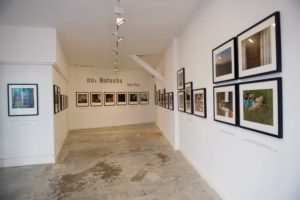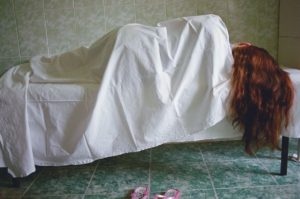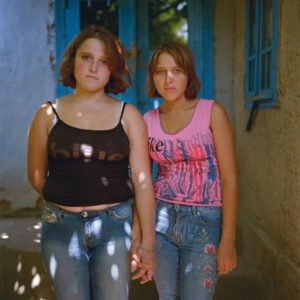Arts and TORL – Collaboration between Arts, Advocacy and Public Campaign:
In 2010 FOMACS (now Counterpoints Arts) worked in partnership with the Immigrant Council of Ireland (Immigrant Council) in the context of the public campaign. The team, led by Aine O’Brien, re-located to a city centre  location Dublin. In so doing. create a pop-up gallery space to curate the photographic exhibition Not Natasha by Romanian and London-based photographer, Dana Popa. Through the medium of arts-led documentary photography, Not Natasha tells the stories of female survivors of trafficking.
location Dublin. In so doing. create a pop-up gallery space to curate the photographic exhibition Not Natasha by Romanian and London-based photographer, Dana Popa. Through the medium of arts-led documentary photography, Not Natasha tells the stories of female survivors of trafficking.
Not Natasha focused on the comparative stories of women who had been trafficked into the sex industry from Moldova, providing a comparative frame for the Irish debate and public information campaign.
Popa’s Artist’s Statement, courtesy of Autograph ABP, London, reads as follows:
‘Not Natasha traces the tragically fractured and damaged lives of young girls and women caught up in human trafficking for prostitution within Europe. Dana Popa is a native of Romania, and her focus is on women who originate from the neighbouring Republic of Moldova, the poorest nation in Europe and from which thousands choose to migrate each year.’
the neighbouring Republic of Moldova, the poorest nation in Europe and from which thousands choose to migrate each year.’
Throughout the exhibition, which ran from 7 July – 5 August 2010, 22/23 Duke Street served as a central hub for the wider Turn off the Red-Light campaign. An extensive programme of public workshops and interviews, collective discussions and campaign briefings accompanied the photography exhibition. These included, among others: Animation and Social Justice Storytelling workshops; a public interview with Dana Popa, and a ‘happening’ on the street directly engaging the public as they passed by called, ‘Manifesto for the Turn off the Red-Light Campaign’.
The ToRL campaign hub – was located alongside the exhibition and gallery space – served as a base for politician briefings, network meetings, media press conferences and advocacy workshops run by the Immigrant Council and Torl partners. The Not Natasha photographic exhibition ran alongside in a purpose-built art gallery consciously avoided advocacy-led messages, allowing the photographs to speak for themselves. An innovative approach was used to gain maximum exposure for the work by using a site on a busy high street, in a commercial environment with significant footfall. This ‘shop window’ style of communication meant people passing by could engage with the topic without prior lobbying or prescriptive messaging. Many simply walked into the gallery space and then chose to engage, having walked through the exhibition and then connected to the wider anti-trafficking campaign.
The exhibition site was thus strategically divided into two distinct spaces – an art gallery and a campaign hub, yet with public engagement activities programmed across both spaces. The layout and design of the site was crucial since it aimed to link the campaign lobbying and briefing work to communications and audience engagement. A fundamental aspect of the Not Natasha exhibition was that it enabled trafficked women to tell their story without exposing them directly to public scrutiny or making them visible.
The project attracted international reviews and gained considerable public attention. Edinburgh-based photography critic, Roberta McGrath, reviewed the Not Natasha exhibition and campaign hub in Dublin, commenting on its unique blend of art gallery, social change language and public engagement:
The impact of the Not Natasha project was to help re-shape the public perception of the issue of sex trafficking. Former CEO of the Immigrant Council of Ireland, Denise Charlton, describes how creative storytelling in this instance played a significant role in allowing the campaign to ‘bring [trafficked women’s] …voices to a huge range of diverse audiences in Ireland’. See here for an interview with Denise Charlton and a visual overview of the exhibition:
http://www.fomacsretrospective.org/?page_id=2#photography